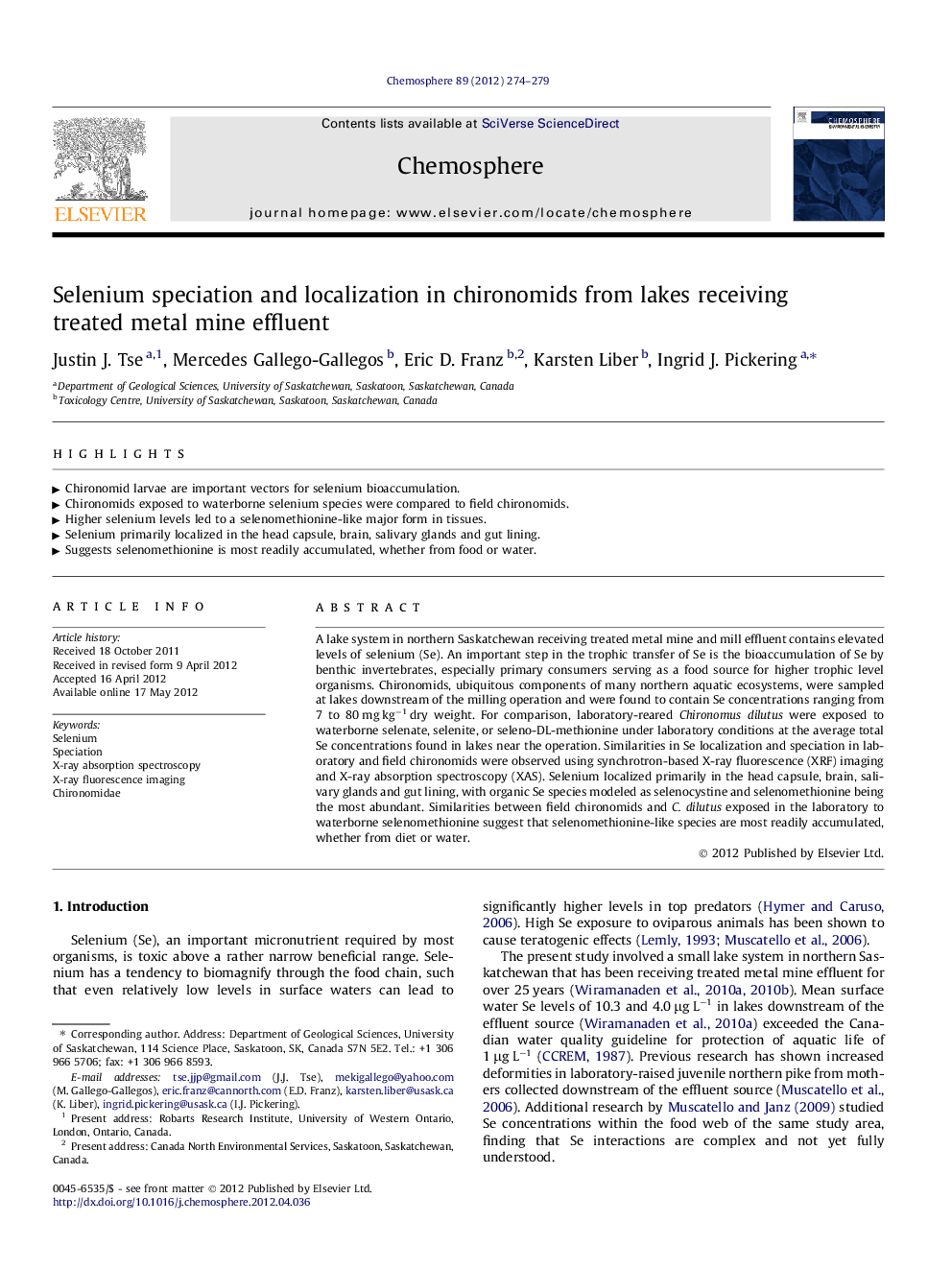| Article ID | Journal | Published Year | Pages | File Type |
|---|---|---|---|---|
| 4410195 | Chemosphere | 2012 | 6 Pages |
A lake system in northern Saskatchewan receiving treated metal mine and mill effluent contains elevated levels of selenium (Se). An important step in the trophic transfer of Se is the bioaccumulation of Se by benthic invertebrates, especially primary consumers serving as a food source for higher trophic level organisms. Chironomids, ubiquitous components of many northern aquatic ecosystems, were sampled at lakes downstream of the milling operation and were found to contain Se concentrations ranging from 7 to 80 mg kg−1 dry weight. For comparison, laboratory-reared Chironomus dilutus were exposed to waterborne selenate, selenite, or seleno-DL-methionine under laboratory conditions at the average total Se concentrations found in lakes near the operation. Similarities in Se localization and speciation in laboratory and field chironomids were observed using synchrotron-based X-ray fluorescence (XRF) imaging and X-ray absorption spectroscopy (XAS). Selenium localized primarily in the head capsule, brain, salivary glands and gut lining, with organic Se species modeled as selenocystine and selenomethionine being the most abundant. Similarities between field chironomids and C. dilutus exposed in the laboratory to waterborne selenomethionine suggest that selenomethionine-like species are most readily accumulated, whether from diet or water.
► Chironomid larvae are important vectors for selenium bioaccumulation. ► Chironomids exposed to waterborne selenium species were compared to field chironomids. ► Higher selenium levels led to a selenomethionine-like major form in tissues. ► Selenium primarily localized in the head capsule, brain, salivary glands and gut lining. ► Suggests selenomethionine is most readily accumulated, whether from food or water.
